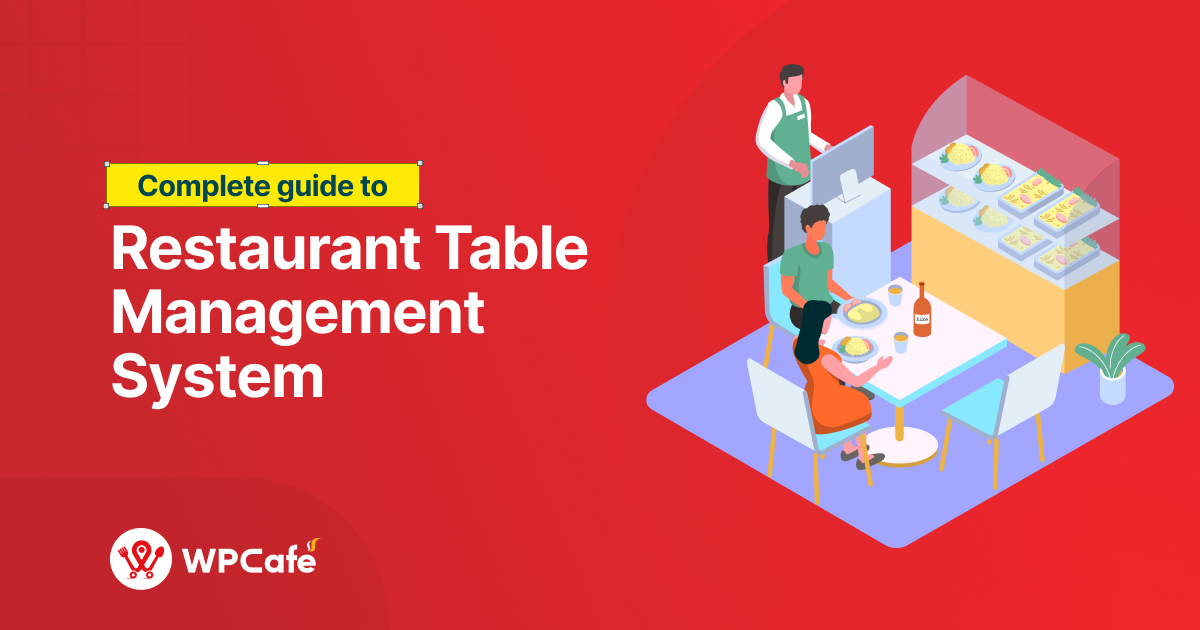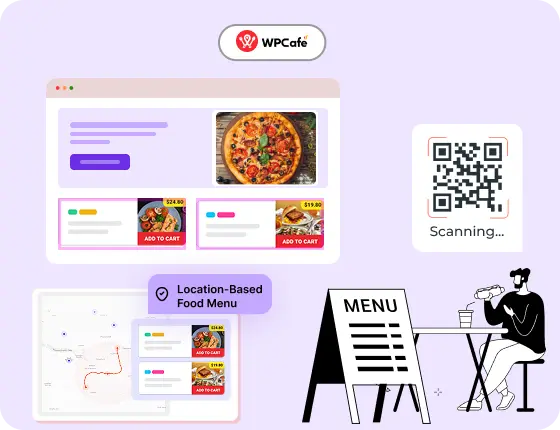The Complete Guide to Restaurant Table Management System

Table of Contents
Running a restaurant means balancing many moving parts. Tables need to be filled, guests want quick service, and staff must work smoothly together. If one part slips, the whole experience suffers.
This is where a restaurant table management system makes a real difference. Whether you call it a restaurant table booking system or a seating management tool, its primary goal is to make every shift run more smoothly.
In this guide, we’ll look at what a table management system is, the features it should have, the benefits it brings, and how to choose the right one.
Let’s get started.
What is a restaurant table management system?
A restaurant table management system is a tool that helps you plan, track, and manage seating arrangements in your dining area. Instead of using pen and paper, staff can see a digital layout of the floor, know which tables are occupied, and handle reservations or walk-ins more efficiently.
A good system does more than just track tables. It connects with the tools you already use in daily operations:
- POS systems – sync orders and payments with seating information.
- Kitchen display systems (KDS) – keep the kitchen updated with real-time guest flow.
- Customer service and ordering – ensures servers know where to go and who to serve next.
When these pieces work together, the restaurant runs more smoothly. Guests spend less time waiting, staff are less stressed, and managers can make better decisions about how to handle busy shifts.
8 Must-have features of restaurant table management
Not all table management systems offer the same features. While some cover the basics, others go further by helping restaurants handle busy shifts, reduce mistakes, and stay organized behind the scenes.
If you’re considering a system for your restaurant, here are the core features to look for:
Visual table layout and customization
You should be able to create a digital map of your dining floor. Many restaurant floor plan software tools allow you to drag and drop tables, customize layouts, and track changes in real time. Custom layouts also allow you to adjust for events, seasonal changes, or new seating arrangements.
Real-time availability tracking
A system must show updates instantly. When a table is cleared or a new group is seated, the system should reflect that right away. This avoids confusion and double bookings during busy hours.
Reservation and waitlist system
Handling online bookings and walk-in guests efficiently can make or break a busy service. A built-in table reservation system lets you manage online bookings and walk-in guests efficiently, helping you avoid double bookings and long waits.
Staff assignment and zone management
Assigning tables to servers based on zones keeps service balanced and helps avoid confusion. It also improves communication between the front and back of the house, especially during peak hours.
Mobile/tablet compatibility
Front-of-house staff need to move around. A mobile-friendly system lets them check availability, assign tables, and update status without being tied to a host stand.
POS and kitchen sync
When table data is linked with your POS system and kitchen display system, the flow from seating to order to service becomes seamless. The kitchen gets accurate order timing, and the POS keeps records tied to each table.
Analytics and reporting
Beyond the day-to-day operations, a good system should give you insights into table turnover, busy hours, average dining time, and reservation trends. These reports help in planning shifts, improving service, and managing resources more effectively.
Integrations with other tools
If your website is built on WordPress, it’s important to choose a system that integrates with plugins like WooCommerce. This makes it easier to handle online orders, payments, and customer data in one place.
Benefits of using a restaurant table management software
Managing tables manually can work for small cafés, but as reservations grow, a modern restaurant reservation system becomes essential. A table management software plugin helps reduce these problems by creating a smoother dining experience and a more predictable workflow.
Here are some of the key benefits:
- Reduced wait times: When staff can see which tables are available or will be turning soon, they can seat guests more quickly. A live overview of table status helps avoid double bookings or long waits, even during rush hours.
- Increased table turnover: The faster you can seat, serve, and reset tables, the more guests you can handle in a single shift. A system helps reduce gaps between parties and makes sure tables are used to their full potential.
- Enhanced customer satisfaction: Guests notice when a restaurant runs smoothly. Shorter waits, accurate reservations, and well-timed service all contribute to a better dining experience and customer support. And happy guests are more likely to return and recommend your restaurant to others.
- Better team coordination: When staff can rely on one shared system, communication improves. Hosts, servers, and kitchen staff all have access to the same information, which helps reduce confusion and speeds up service.
- Data-driven decision-making: Table management systems often come with built-in reports. These help you spot patterns in guest behavior, understand your busiest times, and plan shifts or promotions more effectively. Instead of guessing, you can make informed decisions based on real data.
How to choose the right table management system for your restaurant
Not every table management system will be the right fit for your restaurant. The best choice depends on your setup, the tools you already use, and the experience you want to deliver to your guests.
Here are a few things to consider when making your decision:
- Restaurant size: A small café may only need a simple layout and reservation tracker, while a large fine dining restaurant will require a detailed digital floor plan, staff rotation, and advanced reporting. Make sure the system matches your scale.
- Online booking support: If you take reservations through your website or a third-party platform, make sure the system can handle online bookings. Look for features like booking confirmation, guest reminders, and real-time availability updates.
- Mobile access: Staff should be able to update and check the system from tablets or phones. Mobile access is beneficial for restaurants with multiple zones or large dining areas.
- Integration with existing systems: A table management system should not work in isolation. Check if it connects with your POS, kitchen display, or payment tools for restaurants using WordPress or WooCommerce. Integration with these platforms can bring table management, reservations, and online ordering together in one place.
- Customizability: Look for a system you can adjust to your floor plan, service style, and workflow. Customization becomes even more important if you plan to grow or add new services.
Best restaurant table management system: WPCafe
WPCafe is one of the easiest and best free restaurant table management systems to add table management without relying on external software. It combines reservations, food ordering, and table tracking in a single plugin.
Here’s why it works well:
- Visual table layout: Create and customize your restaurant floor plan so staff can track availability in real time.
- Live Table Status: View which tables are available, occupied, or reserved in real time.
- Reservation and waitlist system: Guests can book tables online or join a waitlist, while you stay in full control of seating.
- Staff Assignment Tools: Assign tables to servers and keep track of coverage across shifts.
- Mobile-Friendly Interface: Use the system on tablets or smartphones so staff can stay flexible during service.
- Built for WordPress: No need for third-party apps. Everything runs inside your WordPress dashboard.
- WooCommerce integration: Manage bookings and online food orders in one system. Payments, reservations, and menus are all connected.
- All-in-one management: From table rotation to online orders, WPCafe connects front-of-house, kitchen, and management tasks.
Best practices for restaurant table management
Even with the right tools, table management still depends on how the system is used day to day. Here are some practical steps to help you get the most out of your setup:
- Design an efficient floor plan: Your layout should make it easy for servers to move around and for guests to be seated quickly. Group tables by size and adjust the plan for events or seasonal changes.
- Use data to forecast busy hours: Review reports from your system to see peak times and average table turns. Use this data to prepare staff schedules and reduce wait times during rush hours.
- Train staff on table rotation and guest pacing: Staff should know how to rotate tables fairly and avoid crowding one server with too many guests at once. Training ensures smoother service and less stress during busy periods.
- Use online reservations wisely: Offer online booking to cut down on phone calls, but keep a few tables available for walk-ins. Balancing both helps maximize occupancy and keeps different types of guests happy.
- Sync table data with kitchen & POS: When your system connects with the kitchen and POS, orders move faster, and staff avoid miscommunication. This makes service quicker and more accurate.
Future trends in restaurant table management
Restaurant operations continue to evolve as new technologies become more accessible. Table management systems are no exception. Here are a few trends that may shape how restaurants handle seating and guest flow in the near future:
- AI-driven predictions: Some systems are starting to use predictive tools to forecast table turnover, peak hours, and guest behavior. These insights help with staffing decisions, table pacing, and preparation before busy shifts.
- Smart table assignments: Some systems are starting to use automation to assign tables based on party size, server availability, and guest preferences. This creates a smoother seating process and balances workload across staff.
- Integration with customer profiles and loyalty: As loyalty programs for restaurant and guest data become more common, table management systems may start to use this information to tailor seating experiences, such as recognizing returning guests or remembering seating preferences.
- Voice assistants, QR-based seating: Voice assistants can help staff update table status quickly, while QR codes allow guests to check in, join a waitlist, or confirm reservations with minimal staff involvement.
Conclusion
Managing tables effectively is an important part of running a smooth restaurant operation. When handled well, it improves service flow, reduces wait times, and creates a better experience for guests and staff alike.
A reservation management system helps simplify this process by giving you a clear view of what’s happening on the floor in real time. From reservations to seating to server assignments, everything becomes more organized and predictable.
If your restaurant is built on WordPress, a WordPress restaurant plugin like WPCafe makes it easy to manage tables and other front-of-house tasks without leaving your website. It brings together table layouts, online bookings, staff tools, and order management in one system, helping you stay focused on your guests.
FAQs
What is the best table management system?
The best system is one that fits your restaurant’s size, service style, and budget. For WordPress users, WPCafe is a strong option because it combines table management, reservations, and online ordering in one plugin.
How do restaurants manage table bookings?
In the restaurant industry, most restaurants use a digital reservation system that tracks bookings, availability, and waitlists. These systems often sync with a table layout so staff can assign seats quickly and avoid double-booking.
Can I use a table management system with WordPress?
Yes. Plugins like WPCafe are built specifically for WordPress. They let you manage tables, reservations, and food orders directly from your site, with no need for third-party tools.
What’s the difference between table management & reservation system?
A reservation system handles guest bookings, while a table management system includes a full view of seating, table status, floor plans, and staff assignments. Most modern tools combine both into one system.
How does the table management system help with no-shows?
Many systems send automated booking confirmations and reminders, which reduces no-shows. They also let you track past guest behaviour, manage waitlists, and free up tables faster when bookings aren’t confirmed.


